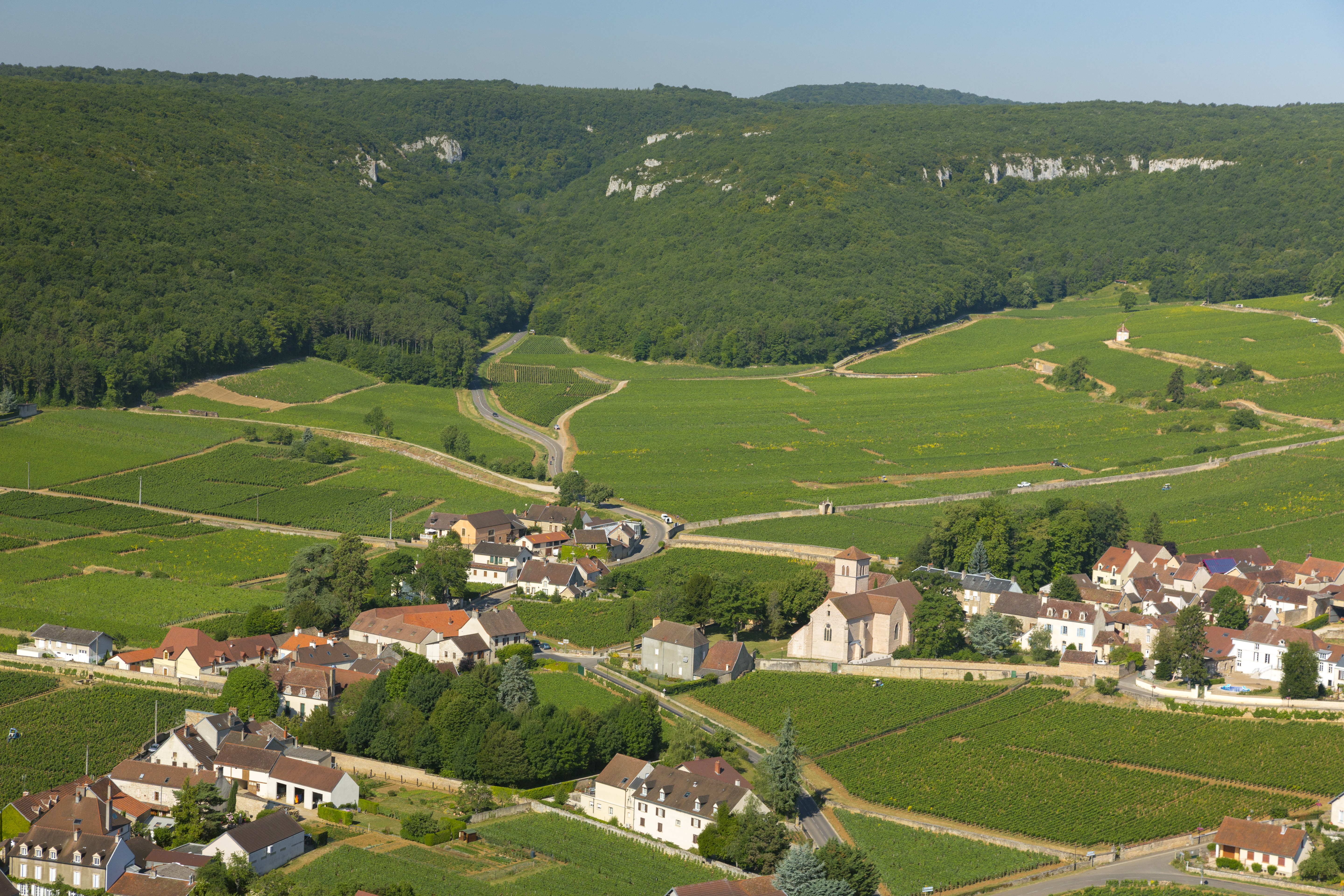

The vineyards of Bourgogne produce some great wines with a historical and international reputation. However, the region is not simply limited to its iconic appellations. In addition to its Village Premier Cru and Grand Cru AOCs, it also produces a range of wonderful Régionale and Village appellations to explore.
You will also find a full list of the Bourgogne’s Climats and lieux-dits on this page.
Check out the complete list of the 84 Bourgogne appellations.
However, your exploration has only just begun. Bourgogne wines have never before offered such high quality. Besides our range of internationally celebrated wines, try some of our lesser-known appellations where there are lots of surprises in store.
And for a fun way to find out more about the wines on offer, try out our “Which Bourgogne wine is right for me?” quiz, or check out Bourgogne Maps to take an interactive tour of the region.
Village appellation
VIGNOBLE DE LA CÔTE DE NUITS
11 septembre 1936,
Reds exclusively - Pinot Noir.
Area under production*:
1 hectare (ha) = 10,000 m² = 24 ouvrées.
409.36 ha (including 79.32 ha Premier Cru).
Average annual yield**:
1 hectolitre (hl) = 100 litres = 133 bottles.
15,649 hl (including 2,930 hl Premier Cru).
*In 2022 **5-year average, 2017-2021.
Appellation Village of the Côte de Nuits region (Côte-d’Or).
This appellation includes 26 Premiers Crus Climats.
Producing communes: Gevrey-Chambertin, Brochon.
The commune of Gevrey-Chambertin also produces 9 appellations Grands Crus (see Appellation sheets N°25).
On the label, the appellations GEVREY-CHAMBERTIN and GEVREYCHAMBERTIN PREMIER CRU may be followed by the name of the Climat of origin.

In the first flush of youth their color is a bright ruby, turning to deep carmine or dark cerise with age. Strawberry, mulberry, violet, mignonette, and rose all help to make up their bouquet of spontaneous aromas. More maturity brings out liquorices, leather and fur, with gamey notes and hints of underbrush. On the palate, they impress by their firm structure, velvety tannins and delicate texture. These wines are everything a great Bourgogne should be: full-bodied, powerful, rich, and meaty. They have both body and spirit. Pleasant when drunk young “on the fruit”, they are nevertheless first and foremost wines for aging, often for long periods. As such, they make an excellent basis for comparing different vintages.

Massive, yet velvet-smooth, the tannins of Gevrey-Chambertin confer power and solidity to the build and contribute to its great longevity. This is a wine for meat-eater, its gamey notes giving it a particular affinity for game, whether furred or feathered, especially when the wine is more fully evolved.
It also goes superbly with rib steak, lamb (braised or in brown sauce), and all musky, solidly fibrous meats, that need time in the mouth to extract all their savour. Some gourmets will even serve it with a fillet of pikeperch or tuna in red-wine sauce. It is at ease with all strong cow-milk cheeses, in particular Epoisses, Ami du Chambertin (a local specialty) or Cîteaux (a near neighbour).
Serving temperature: 15 to 16°C.

For travellers coming from Dijon, Gevrey-Chambertin is where Bourgogne’s Elysian Fields begin. At the entrance to the hollowed hill of Lavaux, a château - once a property of the monks of Cluny - resembles a fortified wine-cellar.
The canons of Langres, too, were for a long time guardians of these vineyards which can be dated back to the year 640 AD, evidence of a long and intimate involvement in the history of Bourgogne’s wine industry. Gevrey-Chambertin forms a kind of guard of honour to a set of fabulous Grands Crus whose crown jewels are Chambertin and Clos de Bèze. The appellation dates from September 1936. The village of Brochon is an extension of Gevrey-Chambertin, sharing the same characteristics. The Pinot Noir is at its peak performance here.

The Premiers Crus occupy the upper portion of the Côte at heights of between 280 and 380 metres (brown limestone soils, rather shallow). Below are the appellation Village vines on brown calcic or limey soils. The vines also reap the benefit of marls covered with screes and red silt washed down from the plateau.
These stony mixtures confer elegance and delicacy on the wine while the clayey marls, which contain rich deposits of fossil shell-fish, add body and firmness. Exposures vary from east to south-east.
